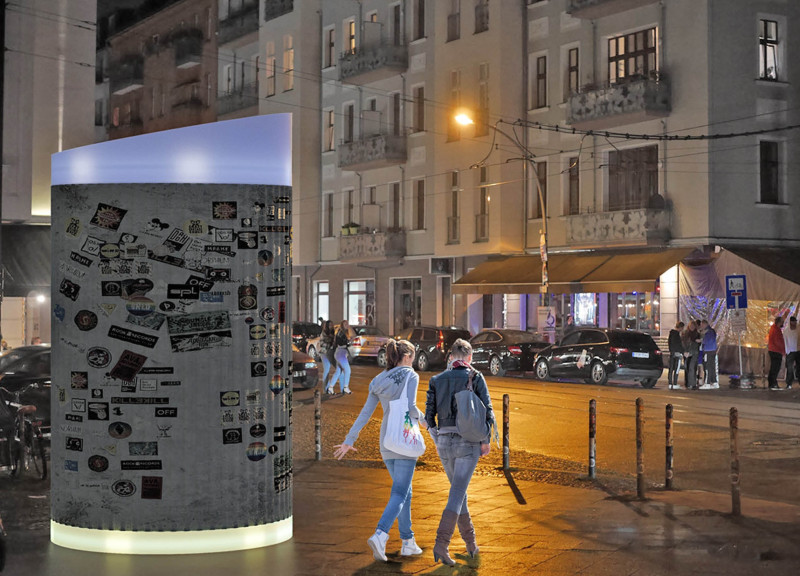5 key facts about this project
The design presents a booth that takes inspiration from the shapes of the Heizkraftwerk Berlin Mitte. Located in Berlin, the booth serves as a functional piece of urban furniture and a cultural reference point, especially linked to the city's techno music scene, including the famous Tresor club. The overall design aims to blend with its surroundings and encourage users to engage with it while expressing themselves.
Materiality
The exterior is covered with a recycled aluminium corrugated sheet. This choice reflects a commitment to sustainability while fitting with the industrial look of the urban environment. The lack of a finish allows the surface to change over time, inviting community members to add their marks through stickers and graffiti. This evolving appearance offers a tangible connection to the life of the city.
Structural Design
Inside the booth, a layer of thermal and sound insulation separates the outer skin from the inner one, which is also made of aluminium. The smooth, curved surface of the inner skin features small holes near the speakers, which improves sound distribution. This design choice serves both functional and aesthetic purposes, enriching the atmosphere while enhancing listening experiences.
Functional Components
Four compartments are located at the base of the booth beneath a removable footboard. These compartments hold ballast tanks that can be filled with water for added stability or emptied for easier movement. Additionally, these sections include technology that supports lighting, Bluetooth connections, and a locking system. This integration of features allows the booth to function well in various environments.
Design Features
The cap of the booth resembles a chimney and is made from frosted acrylic glass. This material allows natural light to enter while also creating a soft glow during the night. The design enhances visibility in public spaces, encouraging users to interact with the booth as it shifts from day to night. The result is a space that fosters gatherings and social interactions.



















































